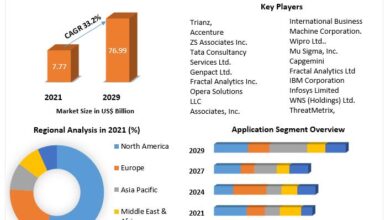Your Key to CX Success

The Gist
- Data-driven foresight. Predictive analytics enables businesses to anticipate customer needs, personalizing interactions and improving overall satisfaction.
- Enhanced efficiency. Leveraging predictive analytics helps optimize resource allocation, reducing waste and aligning efforts with predicted demand.
- Proactive innovation. Predictive analytics identifies emerging trends, allowing businesses to adapt strategies and stay relevant in a dynamic market.
Understanding and anticipating customer needs is more crucial today than ever. Predictive analytics has emerged as a game-changer in the quest for exceptional customer experiences (CX), enabling businesses to leverage data-driven insights to forecast future behaviors, personalize interactions and resolve issues before they arise.
By leveraging predictive analytics, brands can exceed customer expectations, building loyalty and driving growth. This article examines how predictive analytics is transforming CX and why it is an indispensable tool for businesses aiming to stay ahead of the curve.

Introduction to Predictive Analytics
Businesses strive not only to meet but exceed customer expectations to build loyalty and drive growth.
Michelle Huff, CMO of UserTesting and a CMSWire Contributor, a human insight platform provider, told CMSWire that with predictive analytics, businesses can harness vast amounts of customer data, anticipate customer needs, personalize interactions and deliver a seamless journey that delights customers.
“All these are tremendously beneficial to delivering on the customer experience,” said Huff, who added that understanding customers’ next move is both an art and a science that requires businesses to adopt a balanced approach that includes the integration of predictive insights with real-time data, qualitative feedback and human insight, ensuring a more holistic understanding of customer needs.
Predictive analytics not only improves current customer experiences but also identifies emerging trends and shifts in customer preferences. This foresight enables businesses to innovate proactively, adapting strategies to stay relevant in a constantly evolving market. Additionally, predictive analytics optimizes resource allocation, ensuring marketing efforts, inventory management and customer support align with predicted demand, reducing waste and improving overall efficiency.
Thomas Medlin, co-founder at JumpMD, a referral management platform for medical practices, told CMSWire that as part of his predictive analytics strategy, his business implemented machine learning (ML) algorithms that adapt and improve over time with more data.
“This allowed our system to become more accurate in predicting which specialists or medical services would be most suitable for patients based on their unique health profiles and history,” he said. Medlin added that as a result, CX improved dramatically; patients experienced faster, more personalized service and medical practices benefited from a more streamlined, error-free referral process.
“Moreover,” Medlin said, “predictive analytics helped us anticipate peak periods of demand, enabling us to advise our clients on appropriate staffing levels, thus improving their operational efficiency.”
Related Article: What Is Predictive Analytics? And How It Works
Understanding Predictive Analytics
Predictive analytics involves using historical data, statistical algorithms and ML techniques to identify the likelihood of future outcomes based on past data. It helps businesses forecast trends, behaviors and events, enabling informed, data-driven decisions. Key components include:
-
Data Collection: Gathering relevant data from various sources, including customer transactions, interactions and feedback.
-
Data Analysis: Processing and analyzing the collected data to uncover patterns and correlations.
-
Predictive Modeling: Developing models that predict future customer behaviors and outcomes. These models are continuously refined and updated to improve their accuracy and effectiveness.
Predictive analytics, a market that Statista projects will grow to $41.52 billion by 2028, transforms raw data into actionable insights, allowing businesses to anticipate customer needs, personalize experiences and proactively address issues, enhancing customer satisfaction and loyalty.
Pierce Hogan, owner of Varied Lands, a travel guide and resource site, told CMSWire that his business uses predictive analytics to enhance its customer experiences by gaining a better understanding of their needs and preferences. “It is essential because it fosters customer loyalty and engagement,” said Hogan. “By understanding and predicting what our customers want, we can provide relevant and timely recommendations, which keep them coming back.”
Predictive analytics enables businesses to forecast customer behaviors and preferences by analyzing historical data. By identifying patterns and trends, businesses can anticipate what customers are likely to want or need in the future, allowing for proactive service adjustments and offerings. Through detailed data analysis, predictive analytics helps tailor interactions to individual customer preferences. This personalization enhances satisfaction by making customers feel understood and valued, leading to more meaningful and relevant engagements.
“Predictive analytics helps businesses improve customer experiences by foreseeing trends and behaviors,” said Hogan. “This allows us to tailor our services and content, creating personalized experiences that resonate with our audience. Our challenge was understanding diverse customer preferences. Using predictive analytics, we identified patterns and customized our offerings accordingly.”
Predictive analytics also identifies potential issues before they arise by detecting anomalies and trends that indicate possible problems. Businesses are then able to promptly address these issues, often resolving them before customers are even aware of them, thus preventing pain points in the customer journey and improving the overall customer experience.
Shawn Plummer, CEO at The Annuity Expert, an insurance agency, broker, and retirement planning resource, told CMSWire that CX was significantly improved by anticipating customer needs. “Predictive analytics allowed us to foresee customer questions before they were even asked,” said Plummer. “For instance, if a customer was likely to inquire about a policy detail, we proactively sent them the information. This reduced their need to contact us and made them feel understood and cared for.”
Related Article: Using Predictive Analytics to Improve Customer Retention
Benefits of Predictive Analytics
Predictive analytics helps build stronger customer relationships by offering personalized and proactive services. By understanding and anticipating individual customer needs, businesses can create tailored experiences that foster loyalty and long-term engagement. Leveraging predictive insights enables businesses to drive sales and expand their market reach. By identifying trends and opportunities, businesses can optimize their marketing strategies, target the right audience and ultimately boost revenue and growth.
Many leading brands have successfully implemented predictive analytics to enhance the customer experience. For instance, Amazon uses it to recommend products based on browsing and purchase history, significantly improving customer satisfaction and driving sales. Netflix uses it to suggest content tailored to individual preferences, leading to increased viewer engagement and retention. In addition, Starbucks leverages AI-driven predictive analytics to optimize inventory and personalize marketing efforts, resulting in improved operational efficiency and enhanced customer loyalty.
Craig Crisler, CEO at outsourcing solution provider Support Ninja, told CMSWire that predictive analytics is revolutionizing CX by providing businesses with powerful tools to anticipate and respond to customer needs in real time.
“While sentiment analysis has been a useful starting point, helping to gauge customer emotions, the true value lies in the predictive capabilities of AI,” said Crisler. By anticipating customer needs, predictive analytics streamlines operations and reduces response times. This efficiency allows businesses to allocate resources more effectively, ensuring quicker and more accurate service delivery, he added.
“Predictive analytics leverages AI to sift through vast amounts of customer interaction data, offering insights that enable CX agents to deliver personalized and proactive service,” said Crisler. “By analyzing data such as past purchases, recent interactions, and potential issues, AI can suggest the best responses and solutions before a problem even arises.”
Jennifer Chase, executive VP and CMO at data and AI provider SAS, told CMSWire that over the past several years, Ulta Beauty, the largest beauty retailer in the U.S., has reimagined customer experiences and personalized marketing campaigns with a specific focus on its Ultamate Rewards loyalty program.
“Customers benefit from targeted recommendations powered by AI. And using predictive models to optimize campaigns has decreased Ulta Beauty’s marketing costs without reducing marketing effectiveness,” said Chase.
Chase said that Germany’s Commerzbank was also seeking to deliver more relevant product promotions and tailor its customer experience. “The bank aggregated and analyzed customer data to gain insights that help it better understand customer behavior,” said Chase. “Now, customers who opt into Commerzbank’s personalized marketing program receive tailored recommendations for products and services via the bank’s online portal, instead of being bombarded with generic advertising.”
Related Article: 3 Ways AI-Powered Predictive Analytics Are Transforming Ecommerce
The Challenges of Predictive Analytics
Crisler said that as with any endeavor that has to do with technology, the journey to implementing predictive analytics comes with its challenges. Adopting predictive analytics involves overcoming technical challenges, such as the need for advanced infrastructure and skilled personnel, as well as organizational barriers, including resistance to change and the need for cross-departmental collaboration.
“Initially, we faced hurdles in integrating various data sources and ensuring data quality,” said Crisler. “It was crucial to invest in robust data management systems and provide comprehensive training for our agents to fully utilize the new tools.”
Like all AI applications, the effectiveness of predictive analytics largely relies on the precision and completeness of the data used. Ensuring high-quality data involves the complex and resource-intensive process of cleaning, validating and integrating data from diverse sources.
Addressing privacy issues is critical to maintaining customer trust when it comes to the use of personal data. Businesses must handle data responsibly, complying with data privacy regulations and being transparent about how customer data is used in predictive models. In addition to regulatory compliance, businesses should implement robust data security measures to protect customer information from breaches and unauthorized access. Regular audits and assessments of data practices can help identify potential vulnerabilities and ensure continuous adherence to privacy standards.
Businesses should adopt a customer-centric approach by giving individuals control over their data. This includes clear communication about data collection practices, offering opt-in and opt-out options and providing easy access to privacy settings. By prioritizing transparency and customer consent, businesses can build stronger relationships based on trust. Balancing innovation with privacy considerations is essential for leveraging predictive analytics while maintaining the confidence of one’s customer base.
Crisler suggested that there are some best practices he recommends for businesses looking to adopt predictive analytics, including:
-
Start With Quality Data: Ensure your data is clean, well-organized and comprehensive.
-
Invest in the Right Technology: Choose AI and analytics tools that seamlessly integrate with your existing systems.
-
Train Your Team: Provide thorough training for your CX agents to help them understand and leverage the insights provided by predictive analytics.
-
Monitor and Adjust: Continuously monitor the performance of your predictive analytics system and make adjustments as needed to improve accuracy and relevance.
“By embracing predictive analytics, businesses can stay ahead of the curve, offering superior customer experiences that drive loyalty and growth,” said Crisler.
Future Trends in Predictive Analytics for CX
Emerging tools and techniques, such as more sophisticated ML algorithms and real-time data processing, are poised to further enhance the capabilities of predictive analytics. These advancements will enable more accurate and timely insights. The growing role of AI will significantly boost predictive analytics. AI can enhance data analysis, improve model accuracy and enable more dynamic and responsive predictions, making customer interactions even more personalized and efficient.
Slav Kulik, CEO and co-founder of Plan A Technologies, a software development and digital transformation company, told CMSWire that thanks to all the latest innovations, there is going to be an explosion of personalization over the coming decade.
“People will customize their clothes, their medicine, their media and so much more to an extreme that is tough for us to imagine today,” said Kulik. “Predictive analytics will allow the right hyper-personalized CX experiences to be served up at the right time to the right person.”
Kulik suggested that this will build more enjoyment and trust with brands and should inspire consumers to both purchase more and to be happier with their purchases.
Predictive analytics is expanding across various customer touchpoints and industries, from healthcare to finance. This broader application allows businesses to harness predictive insights in new ways, driving innovation and improving overall customer experiences across multiple sectors.
Additionally, the integration of predictive analytics with other emerging technologies like the Internet of Things (IoT) and augmented reality (AR) is set to impact how businesses interact with customers. IoT devices can provide continuous streams of data, offering deeper insights into customer behaviors and preferences. This data, when analyzed through predictive models, can help businesses anticipate customer needs more effectively.
In addition, the evolution of natural language processing (NLP) will further refine how predictive analytics interprets customer feedback and sentiment. By understanding and predicting customer emotions and responses more accurately, businesses can tailor their communication strategies to be more empathetic and effective, encouraging and building stronger customer relationships.
As these technologies continue to develop, the potential for predictive analytics to transform customer experience will only grow, making it an indispensable tool for businesses aiming to stay ahead in a competitive market.
Final Thoughts
Predictive analytics has become an indispensable tool for businesses aiming to deliver exceptional, emotionally positive customer experiences. By leveraging data-driven insights to forecast customer behaviors, personalize interactions, and proactively resolve issues, businesses can stay ahead of the curve and foster long-lasting customer loyalty. Brands that embrace predictive analytics will be well-positioned to drive growth, optimize operations, and provide the exceptional, tailored experiences that modern customers demand and expect.



